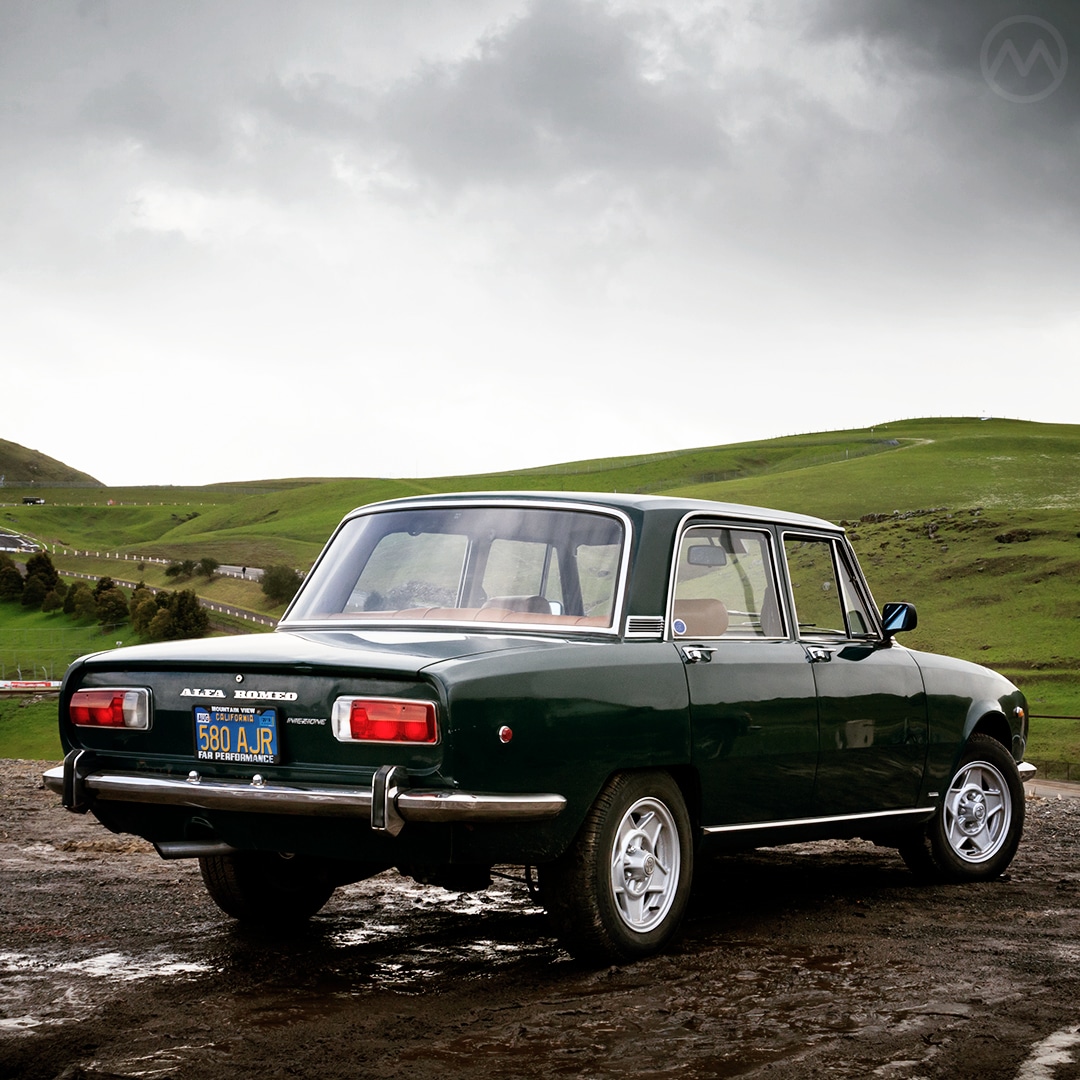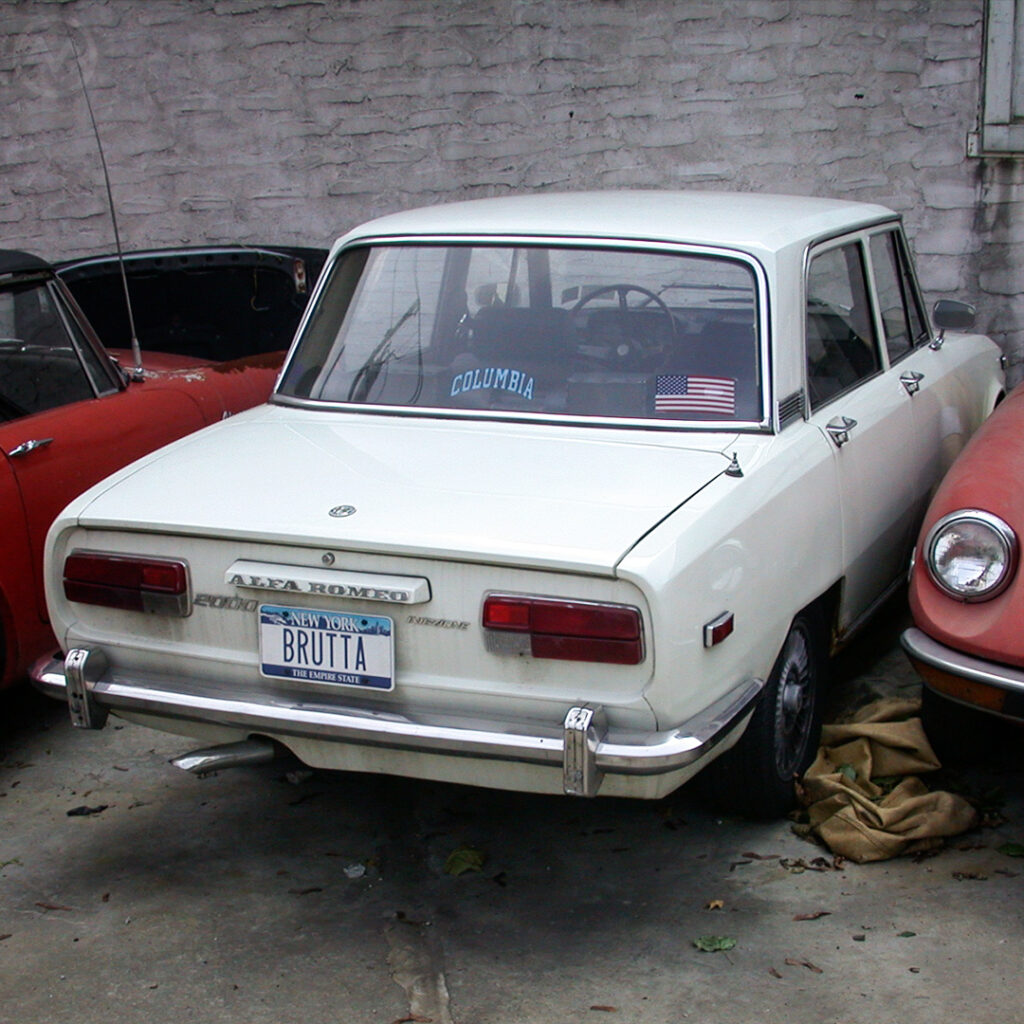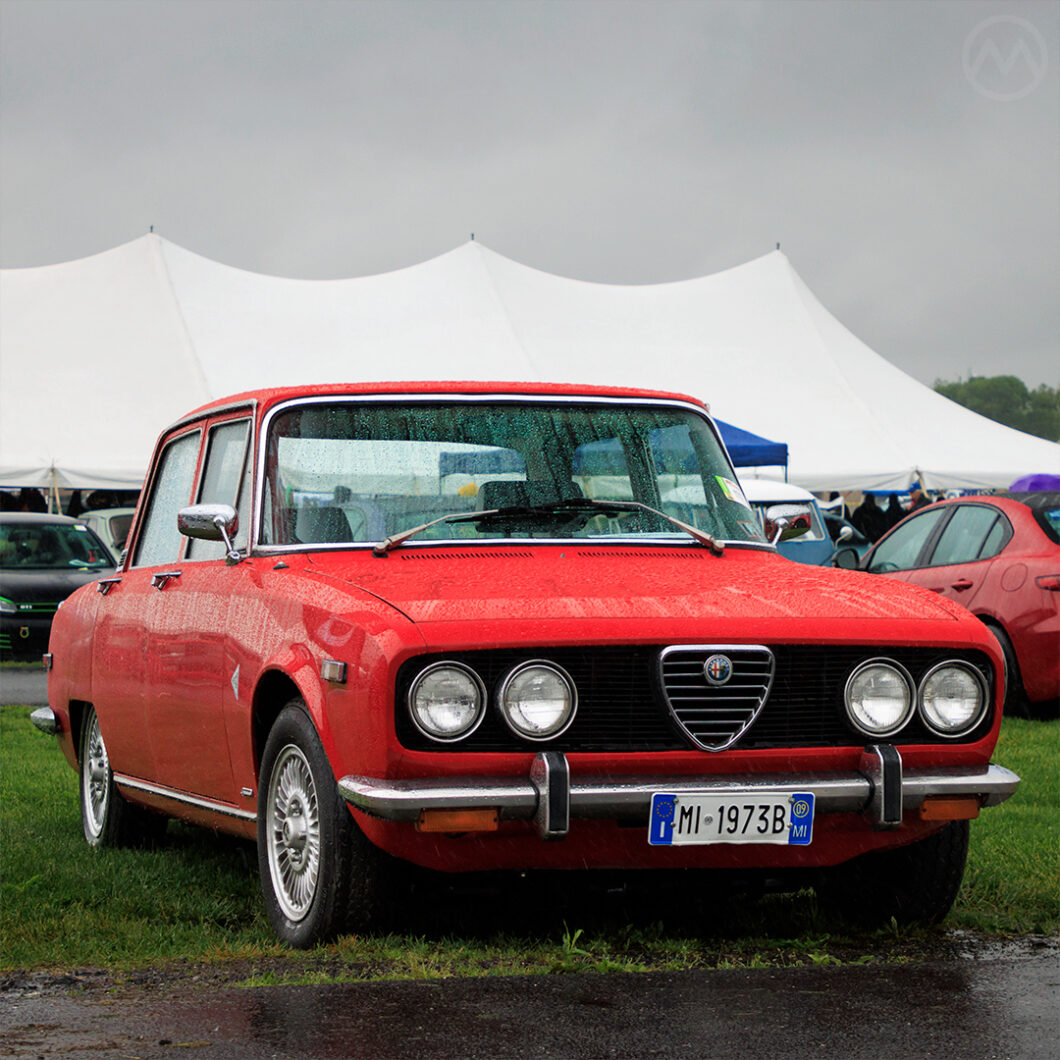To Americans, the Alfa Romeo 2000 Berlina was a sports sedan and one mainly enjoyed by an exclusive clique of sports car fans who needed a little more room than Spiders and GTVs could provide. But that wasn’t necessarily Arese’s intent when it created its late 1960s/early 1970s “Berlina” (as the “1750” and later the “2000”) in 1967.
One of the many reasons attributed to the Berlina’s creation is that Milan’s maestros wanted to boost exports to countries that liked bigger executive cars—like the U.S.— as well as trying to reinvigorate sales of such cars at home.
Alfa Romeo was still ostensibly a luxury brand, even if the hand-made glory days of 8Cs were over. By the mid-1960s, the company’s ancient, slow-selling six-cylinder 2600 Berlina flagship, a car of the 1950s descended from the old 1900, was long overdue for retirement, but Milan had little money to replace it, and there was little political will to fund such projects at the state-owned automaker (Taxpayers? Toot the bill for a new luxury car? Basta!). Any new range-topper would have to be done on the cheap.
To make something new, the small V8 used on the wild 33 Stradale and later enlarged for the Montreal appealed, but it was not a practical choice for building a volume-production sedan (although that would have been a seriously hot car had it ended up in the Berlina). Instead, Alfa had to use what it had on hand. Unfortunately, that meant a counterproductive effort that started with the existing Giulia Berlina.
Stretching the Giulia
Giuseppe Scarnati’s squared-off Giulia, which looked like it could have originated as a cubist painting, dated back to 1962 and was by 1967 a very familiar car in Europe. Despite looking like the box it came in, the shape hid a slippery .43 drag coefficient (good for the sixties, not so great today) and what a decade earlier would have been race car mechanical pieces. Boxy or not, it’s fair to say almost everyone respected how good the Giulia was to drive and that it was unmistakable for any other car on the road, even other boxy Italians like the Fiat 124.
As a platform, it was hard to go too far wrong with its mechanicals. Even the lowliest Giulia 1300s were fun cars to hoon around.
To replace the 2600 and appeal to more moneyed buyers, Bertone was tasked with reskinning this fine machine. Although he had one foot out the door, Giorgetto Giugiaro worked on the project in the early stages along with Nuccio Bertone himself, though many changes were happening at Bertone at the time. Unfortunately, the changes were truly skin-deep, with the production 1750 using many of the same internal stampings as the Giulia but with a 2.4” (6cm) wheelbase stretch and longer overhangs.
Because the Giulia was so upright, altering the proportions required major expense, which state-controlled Alfa Romeo was not willing to do at the time. Thus, the hyper-conservative Berlina is just a stretched 105-Series Giulia in a slab-sided Bertone suit.
The looks were good for the time and reflected the late 2600 Berlina it replaced. This understated shape definitely appealed to moneyed Italians who would also have shopped the subtle, low-profile Lancia Flavia (itself quite square-rigged), but it isn’t as distinctive today as the Giulia it was based on and definitely not as overtly sporty to behold.

The 1750 and 2000 Berlina
Bowing to the press in Salerno in January 1968, the Berlina was first the 1750, which actually used a 1,779-cc twin-cam and other 105-series mechanical pieces. It gave way to the modestly revised 2000 (with very modest help from Pininfarina’s Paolo Martin) in 1971, now with the 1,962-cc engine.
In the U.S., these cars came loaded and equipped with SPICA fuel injection, but if Alfa had hoped to broaden its appeal, they failed. Less than 3,500 were sold in three years. Leftovers were on sale for a couple more years after that in the various hole-in-the-wall sports car dealerships that often sold Alfas back then. In 1973, the car got impact bumpers which, as on many other cars, didn’t really do it many favors aesthetically.
Those who were tempted, however, got a big car that was a joy to drive and sat four in considerable comfort and style.
The Berlinas were more modern to look at than the regular Giulias, which continued on sale alongside them in most countries, but were basically the same car but stretched and with only the top engines (no Diesels or 1.3-liter junior editions). The old Giulia was dropped in the USA to make room for this larger car, but it didn’t seem to make much of an impression on people outside of existing Alfaholics.
That didn’t mean it wasn’t good. It had plenty of room and performance on par with stringback sportscars and BMW’s similarly sporty sedans. It’s just that the market for such cars was still in its infancy in the early 1970s and Alfa couldn’t convince customers of its premium-ness on style, marketing, or performance alone. BMW did much better, but in the early 1970s the German firm was also a very niche player in the U.S.
A patchy service network, the complex SPICA system, and indifferent quality on what was not a cheap car didn’t help, but most Alfa shops the 1970s were places that were pretty dedicated to the make.

At home, the car lasted until 1977, with its intended replacement, the Alfa 6, not going into production until 1979. Alfa had developed the 6 for a 1973 intro, but for budget reasons, it focused on the more plebeian Alfetta Berlina instead. Since the 6 was so delayed, the 2000 Berlina was at first replaced by an upmarket Alfetta 2000.
Almost 90,000 2000 Berlinas were made, and it resonated much better with “executives” at home and in Western Europe than they did here. Rust, and the propensity for these cars to donate their engines to 105-Series coupe and spider resto projects, means survivors are rare today.
We spied the red Berlina up top in 2024, and the Green one in 2019. The White one just above, a late 1973 example, dates all the way back to 2005.

